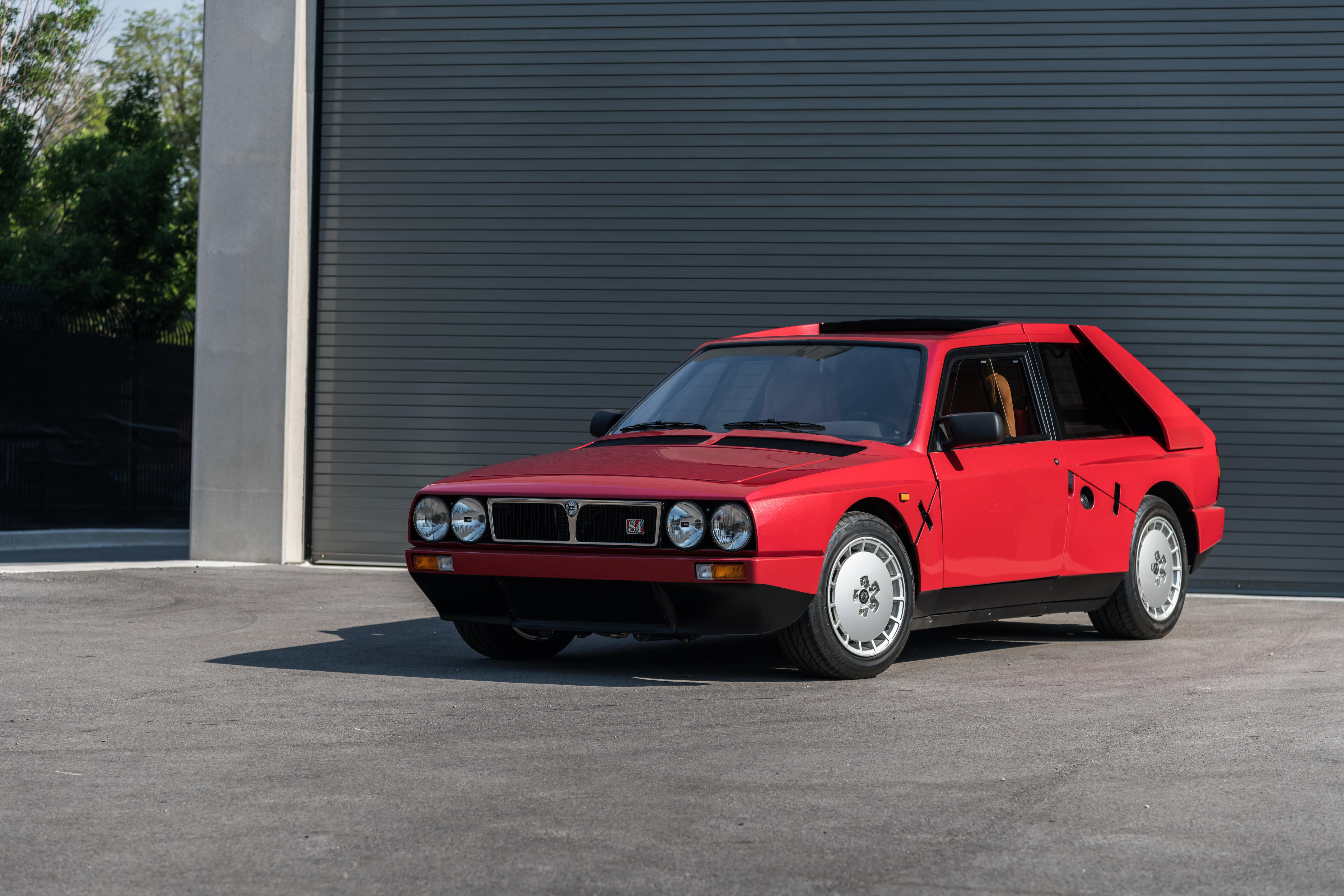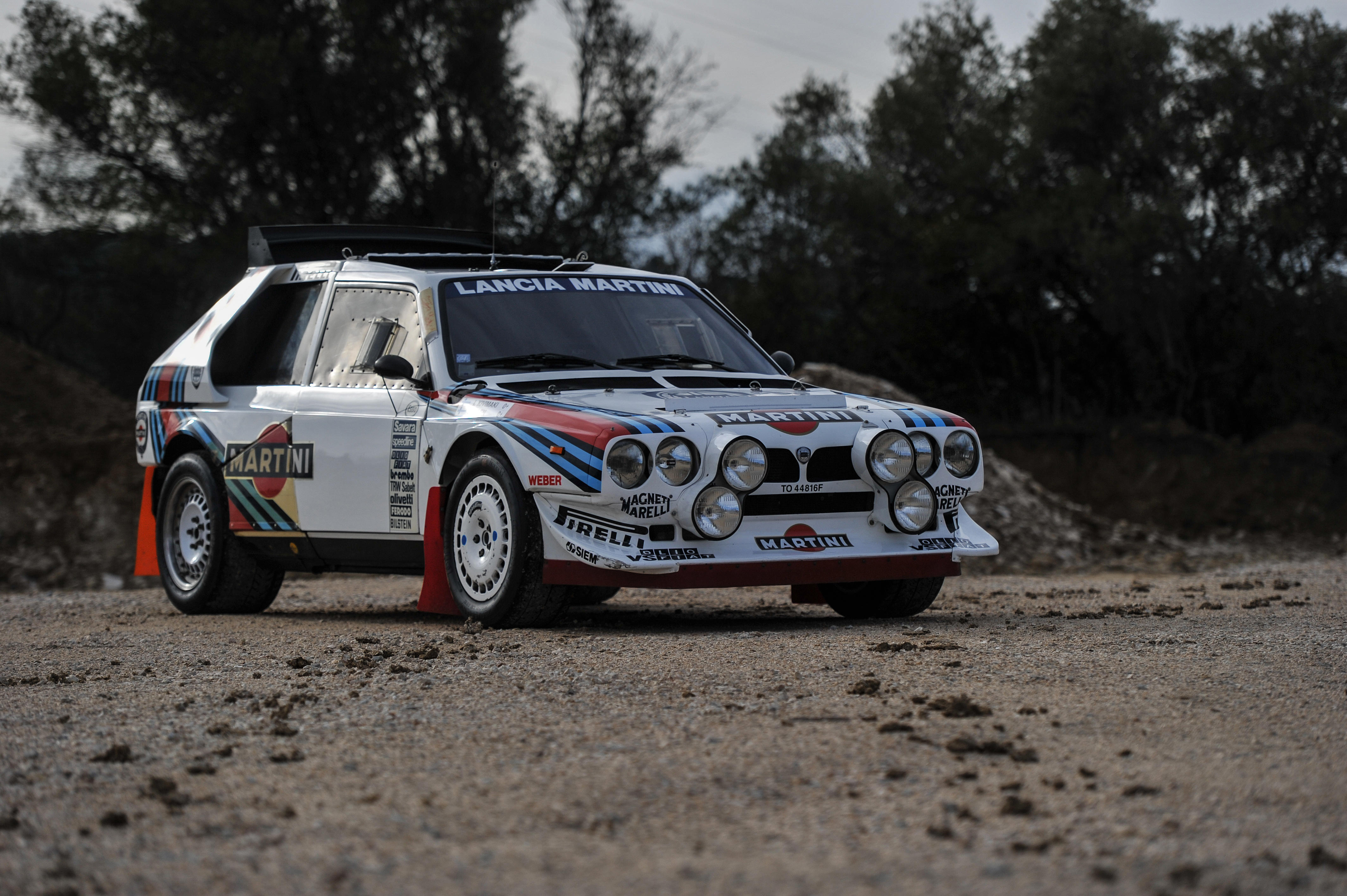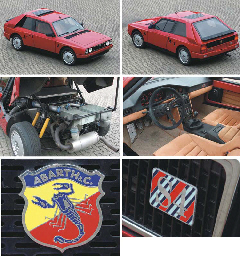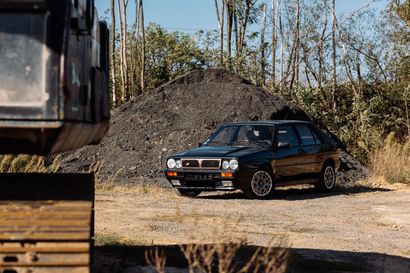1,579cc DOHC 16V Inline 4-Cylinder Engine KKK Turbocharger and Positive Displacement Supercharger Electronic Fuel Injection 247bhp at 6,750rpm 5-Speed Manual Transaxle – All Wheel Drive 4-Wheel Independent Suspension 4-Wheel Disc Brakes *Just one dedicated owner from new with factory delivery *Rare Group B Homologation car with 'Twin-charged' Engine *Highly Original Condition with less than 8,900 kms on the odometer *Offered with original purchase documentation and owner's manual The Lancia Delta S4 The battle for Group B rally car supremacy raged from the class's inception in 1982 until its demise a short time later at the end of the 1986 season. Nonetheless, automakers Audi, Citröen, Fiat, Ford, Lancia, Opel, Peugeot and Rover invested heavily into the practically unlimited class. Encouraged by the absence of restrictions present in other rally classes, innovative automotive technologies such as all-wheel drive, 'twin-charging' and the use of space-age materials like Kevlar found their way into some of the homologation and competition vehicles that remain legendary to this day. Drawing on the success of the Lancia Rally 037, executives set in motion their plans for a successor to the retiring rear-wheel drive platform. Facing stiff competition from other automakers who had successfully implemented all-wheel drive systems and higher output engines, Lancia conceptualized and constructed its new platform, the Delta S4. With its focus set on a lightweight, all-wheel drive platform, the development team elected to conform to requirements of the naturally-aspirated 2,500cc (forced induction limited to 1,785cc) class to compete with its main opponent, the Peugeot 205 T16. Compared to the 037, which competed in the larger displacement but heavier 3,000cc class, the Delta S4 was permitted to compete at a reduced minimum weight of 890kg. It proved more than formidable, as the Delta S4 was the most powerful Group B Rally car that Lancia ever produced. It ended up winning its debut race at the 1985 RAC Rally. The foundation of the Delta S4 chassis started with a CroMoly steel tubular space frame. Reinforced with aluminum alloy, the steel skeleton was then covered with epoxy and fiberglass body panels. With pick up points for the suspension welded to the tube frame sections, maintaining and repairing the suspension proved a straightforward process. The latticed, tubular frame also permitted easy access to the engine, transmission and the all-wheel driveline for maintenance and repair. This was particularly important since driveline components could potentially fail during a rally stage, and a quick repair meant the difference between competing in the next stage or dropping out of a race. Mounted within the tubular lattice work of the rear section, engineers positioned the oversquare (88.5mm bore x 71.5mm stroke) 1,759cc Lancia mill. Instead of seating iron or hard alloy cylinder liners, this engine featured aluminum cylinder bores with a hardened ceramic surface to handle the rigors of the combustion process. Always innovating, the engineers sought a way to generate more power without sacrificing bottom end response. Given the turbocharger technology of the day, the Lancia Delta S4's inline four-cylinder engine could have reached a staggering 480+ horsepower (in full WRC race trim with calibration). However, this peak power output would come at the sacrifice of bottom-end response. To compensate for the notorious turbo lag, Lancia incorporated a responsive, positive-displacement supercharger. Its successful implementation of the first twin-charged forced induction solution served in both the homologation vehicles and the full racecars. The engine powering the homologation vehicles employed a Weber-Marelli IAW Integrated Electronic Ignition and Fuel Injection system conservatively calibrated to generate 247bhp at 6,750rpm and 215 lb-ft torque at 4,500rpm. Engineers mated a 5-speed transmission to the full-time all-wheel driveline of the t
1,579cc DOHC 16V Inline 4-Cylinder Engine KKK Turbocharger and Positive Displacement Supercharger Electronic Fuel Injection 247bhp at 6,750rpm 5-Speed Manual Transaxle – All Wheel Drive 4-Wheel Independent Suspension 4-Wheel Disc Brakes *Just one dedicated owner from new with factory delivery *Rare Group B Homologation car with 'Twin-charged' Engine *Highly Original Condition with less than 8,900 kms on the odometer *Offered with original purchase documentation and owner's manual The Lancia Delta S4 The battle for Group B rally car supremacy raged from the class's inception in 1982 until its demise a short time later at the end of the 1986 season. Nonetheless, automakers Audi, Citröen, Fiat, Ford, Lancia, Opel, Peugeot and Rover invested heavily into the practically unlimited class. Encouraged by the absence of restrictions present in other rally classes, innovative automotive technologies such as all-wheel drive, 'twin-charging' and the use of space-age materials like Kevlar found their way into some of the homologation and competition vehicles that remain legendary to this day. Drawing on the success of the Lancia Rally 037, executives set in motion their plans for a successor to the retiring rear-wheel drive platform. Facing stiff competition from other automakers who had successfully implemented all-wheel drive systems and higher output engines, Lancia conceptualized and constructed its new platform, the Delta S4. With its focus set on a lightweight, all-wheel drive platform, the development team elected to conform to requirements of the naturally-aspirated 2,500cc (forced induction limited to 1,785cc) class to compete with its main opponent, the Peugeot 205 T16. Compared to the 037, which competed in the larger displacement but heavier 3,000cc class, the Delta S4 was permitted to compete at a reduced minimum weight of 890kg. It proved more than formidable, as the Delta S4 was the most powerful Group B Rally car that Lancia ever produced. It ended up winning its debut race at the 1985 RAC Rally. The foundation of the Delta S4 chassis started with a CroMoly steel tubular space frame. Reinforced with aluminum alloy, the steel skeleton was then covered with epoxy and fiberglass body panels. With pick up points for the suspension welded to the tube frame sections, maintaining and repairing the suspension proved a straightforward process. The latticed, tubular frame also permitted easy access to the engine, transmission and the all-wheel driveline for maintenance and repair. This was particularly important since driveline components could potentially fail during a rally stage, and a quick repair meant the difference between competing in the next stage or dropping out of a race. Mounted within the tubular lattice work of the rear section, engineers positioned the oversquare (88.5mm bore x 71.5mm stroke) 1,759cc Lancia mill. Instead of seating iron or hard alloy cylinder liners, this engine featured aluminum cylinder bores with a hardened ceramic surface to handle the rigors of the combustion process. Always innovating, the engineers sought a way to generate more power without sacrificing bottom end response. Given the turbocharger technology of the day, the Lancia Delta S4's inline four-cylinder engine could have reached a staggering 480+ horsepower (in full WRC race trim with calibration). However, this peak power output would come at the sacrifice of bottom-end response. To compensate for the notorious turbo lag, Lancia incorporated a responsive, positive-displacement supercharger. Its successful implementation of the first twin-charged forced induction solution served in both the homologation vehicles and the full racecars. The engine powering the homologation vehicles employed a Weber-Marelli IAW Integrated Electronic Ignition and Fuel Injection system conservatively calibrated to generate 247bhp at 6,750rpm and 215 lb-ft torque at 4,500rpm. Engineers mated a 5-speed transmission to the full-time all-wheel driveline of the t















Try LotSearch and its premium features for 7 days - without any costs!
Be notified automatically about new items in upcoming auctions.
Create an alert